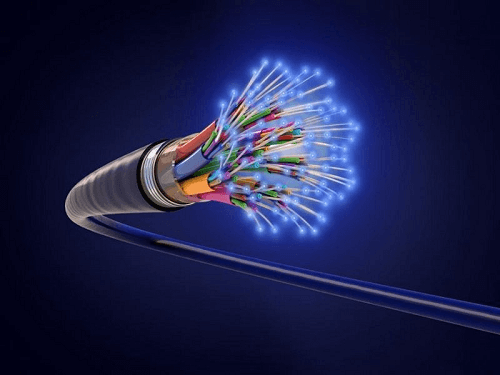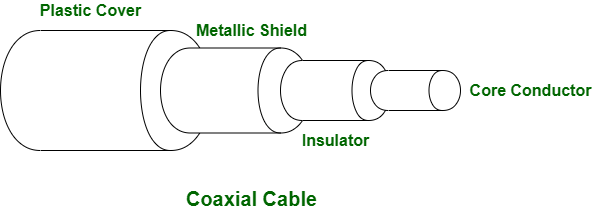Difference between Optical Fibers and Coaxial CableWhat is Optical Fiber?A flexible, transparent fiber composed of plastic or glass transmits light pulses from one end of fiber to the other, is known as Optical Fiber. High-speed and lengthy services are both possible with a fiber optic network. Internet, phone, and television are some common telecommunications uses for fiber optic cables. Many of the benefits of fiber optics connections cannot be found in copper lines. The cables have a larger bandwidth and transport data much more swiftly. An optical fiber may have a few to several hundred glass components, depending on the type of glass used. In this instance, a glass covering known as the cladding surrounds the glass fiber core in the fiber cable. Furthermore, a buffer tube that protects the cladding is included. On the strand, the jacket layer is the last layer of defense. Light is transferred through the fiber's core, which is a small piece of glass close to its center. A material on the exterior is referred to as the outer material and is encircled by a glass core in cladding. Light is reflected into the core during normal functioning by the exterior material. Using a plastic covering known as a buffer coating, fibers are shielded from damage.
What is the process of an optical fiber?Optical fibers function in accordance with the Total internal reflection concept. Light rays move in straight lines, which might make it challenging for them to convey significant amounts of data. Therefore, it will be extremely difficult to take advantage of this advantage without a long, straight cable free of bends. All of the light beams in optical cables are bent inward in order to combat this distortion (using TIR). The optical fibers transmit data as light rays move through them, bouncing off the surfaces on their way from one end to the other. Lights do fade across wider distances, however much more slowly than when using metal wires, depending on the material's purity. The following components are part of fiber optic relay systems:

What is Coaxial Cable?An electrical cable with a copper conductor, an insulator over it, and a braided metal mesh to lessen crosstalk and signal interference is known as a coaxial cable. Coaxial and coax cables are both employed. The braided metal conductor that surrounds the insulator serves to reduce electrical signal interference and crosstalk. The core copper conductor is used to transmit signals, the insulator to give insulation to the copper conductor, and the insulator to transmit signals. Again, a layer of protective plastic has been placed on top of the entire system to further safeguard the cable. Coaxial Cable's Structure

Differences between Optical Fibers and Coaxial CableTwo different types of guided media cables are coaxial and optical fiber cables. While optical fiber is made of plastic and glass and used to send messages in the form of light or optics, coaxial cable is made of plastic and copper wires and used to transmit signals in the form of electric signals. The following are a few of the key distinctions between coaxial cable and optical fiber
Next TopicDifference between
|
 For Videos Join Our Youtube Channel: Join Now
For Videos Join Our Youtube Channel: Join Now
Feedback
- Send your Feedback to [email protected]
Help Others, Please Share










